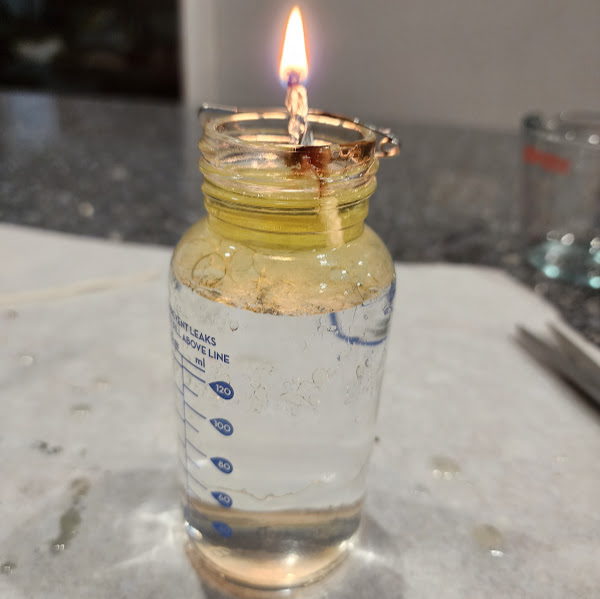I've dabbled with oil lamps in the past, but when we ran out Shabbat candles a few weeks ago, I decided I'd give this ancient lighting strategy another go.
For millennia, oil lamps were a common choice for lighting, and using them on Shabbat sparks a deep connection that goes back to our earliest records. When the Torah talks about collecting up oil for lighting, I'm like, I got you.
Oil lamps are little more than a container, a wick and fuel. Because of this simple design, it's possible to create unique and meaningful lamps with ease. For example, the clam shell I collected a few weeks back while fishing with my Dad is both a practical receptacle for oil and a fun reminder of that experience. There's also a sense of empowerment that comes from knowing that if you have cooking oil and matches, you're only a few improvisations away from having light and heat.
For the last few weeks, my oil supply has come from a couple of long forgotten bottles of cooking oil. It's nice putting these to work instead of chucking them. For wicks, I've experimented with both the floating variety as well as traditional lamp wick.
Floating wicks are the easier option and turn any pool of oil into a lamp:
One lesson learned, however, is that floating wicks tend to drift to the sides of the oil. This baby food jar seems like a good fit for a floating wick, but because the sides slope in, it's not.
What ends up happening is that the wick floats to the side and burns the edges of the glass. Floating wicks work best with a container that's wider at its opening than its base. This clam shell is an extreme example of this shape and works perfectly:
The other style of wick I've used, known as 'lamp wick,' is nothing more than cotton cordage sold with a fancy name. Any length of cotton should do the job, so I'm sure I could have improvised this from an old t-shirt or other materials around the home. However, buying this on Amazon gave me the best chance for success. You need to secure the wick from sliding into the resevoir, and I've found that wrapping the end of the cordage in foil and piercing it with a safety pin does this job nicely.
My first attempt at using lamp wick was a fail. The wick would light and in a minute or two, burn out. The problem was that I had too much distance between the pool of olive oil and the flame. The flame needs to burn the vapors of the oil, not the cotton wick. To make the lamp above work properly, I needed to fill it to the top with oil. However, I don't need that much burn time, so an unexpected solution is to fill the glass jar mainly with water, and then add some oil. The oil naturally seperates from the water, forming a layer of fuel above it. Now the oil is now close to the flame and can be slurped up by the wick with ease.
This version of the lamp burned 1oz of oil for a little over an hour.
There's no doubt that candles are a more straightforward lighting solution than an improvised cooking oil lamp. It's less messy and Just Works. But the benefits of oil lamps are just too numerous to pass up. So I say go the messier and trickier route, it's worth it!






No comments:
Post a Comment